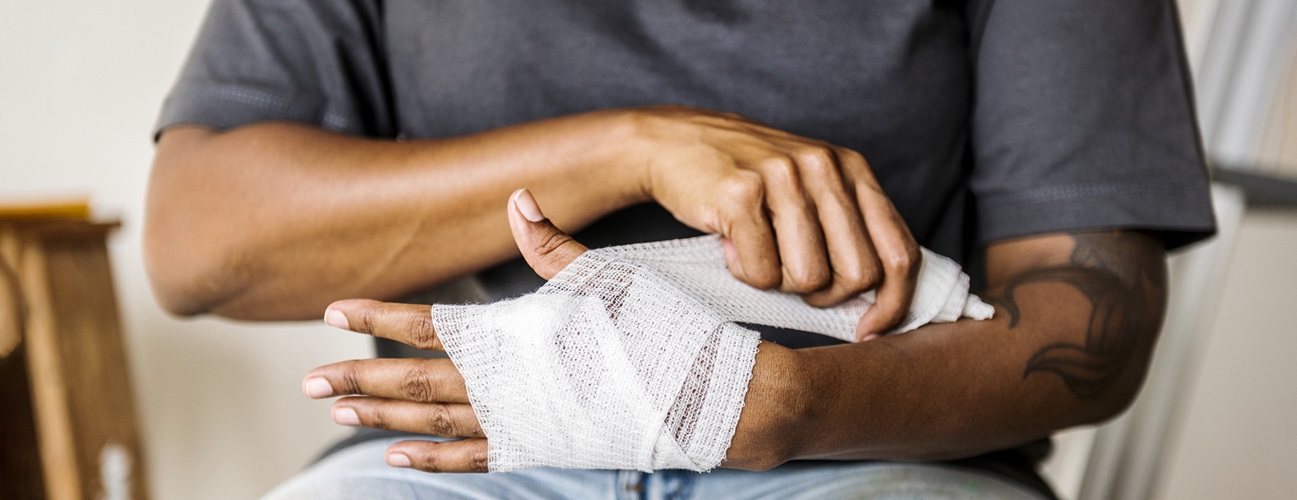What Does MRSA Look Like?
Featured Expert
What is MRSA?
MRSA (pronounced “mur-sa”) stands for methicillin-resistant staphylococcus aureus. It refers to a group of staph bacteria that are resistant to common antibiotics. MRSA germs can get into a skin injury, such as a cut, bite, burn or scrape.
Mark D. Fisher, M.D., a plastic and reconstructive surgeon and director of the Johns Hopkins Burn Center, says that MRSA is becoming more common. “If you spend time in locker rooms, schools, gyms or even prisons, be very careful to avoid cuts and scrapes, and if you get a skin injury in any of these environments, wash it thoroughly.”
Fisher notes that you’re more likely to get a MRSA infection if you have a weakened immune system caused by transplant drugs, HIV, hepatitis C or immune-modulator drugs for psoriasis or rheumatoid arthritis.
Do I have MRSA?
If you’re concerned about a skin injury that’s not getting better, be on the lookout for MRSA signs and symptoms:
A Skin Lesion That Doesn't Get Better
Fisher says, “If after three or four days, the lesion (sore) looks or feels worse, watch it carefully. You might notice worsening inflammation — redness, swelling, pain and heat — around that area.

“One or more red streaks branching out from the injury can mean the infection is spreading to the bloodstream, and you should consult a doctor right away.”
One or More Swollen Red Bumps Draining Pus
Sometimes MRSA can cause an abscess or boil. This can start with a small bump that looks like a pimple or acne, but that quickly turns into a hard, painful red lump filled with pus or a cluster of pus-filled blisters.
Not all boils are caused by MRSA bacteria — other kinds may be the culprit. Rely on a professional to drain a boil. Do not try to squeeze it or drain it yourself.
Worse-Than-Usual Pain or Fever
If a minor skin injury starts to hurt — a lot, much more than seems normal — be on the lookout. If you’re experiencing fever along with an unusually painful lesion that seems infected, see a doctor immediately.
Other Skin Problems That Can Be Confused with MRSA
MRSA Versus Spider Bites
A MRSA infection can look like a spider bite , but if you didn’t see a bug or spider on you or your child, it’s best to check with a doctor to be sure, since the treatment is different for bites than for MRSA.
Cellulitis Versus MRSA
Cellulitis is a deep skin infection caused by staph or streptococcus (strep) bacteria, including MRSA. Cellulitis leads to redness, swelling, pain and heat in the skin, sometimes in a large, diffuse area.
MRSA Versus Impetigo
Impetigo, a skin infection most commonly seen in children, is usually confined to the upper levels of skin. It can looks very similar to MRSA in some cases, with sores and redness. Impetigo is highly contagious, so you should see a doctor if you suspect either of these conditions.
What to Do If It’s MRSA
If a doctor confirms you have MRSA, don’t panic. When treated in time, the outlook in most cases is good.
Fisher explains: “Many MRSA infections can be treated with oral antibiotics, but some require intra-venous medications, so make sure you and your doctor check the sensitivities found on laboratory testing.”
“Most over-the-counter ointments do not cover MRSA,” he adds, “so we prescribe mupirocin topically, which is very effective.
Once the infection is resolved, Fisher says it is a good idea to be tested to see if you are a carrier. If you are, he says don't worry — nasal ointment prescribed by your doctor can “decolonize” you so you no longer pose a risk to yourself and others.
Keep MRSA from spreading
You can spread MRSA to other people if their skin touches the infected area, so keep the sore bandaged and protected. Be careful to wash all of your clothing, bed linens, towels, etc. in hot water and bleach if possible.
It’s super important to take all of your antibiotic medicine, even if you feel better, since MRSA can be stubborn. Follow all of your doctor’s instructions carefully for the best chance of avoiding a return of the infection.







